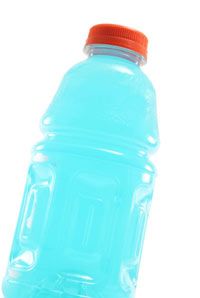Athletes and trainers know that the body loses salt through sweat and that it's important to replace it. That's why many athletes drink sports drinks that contain salts before, during and after exercise to minimize things like muscle cramps that are associated with salt imbalance.
But salts are important not only for athletes. The human body needs various kinds of salts to be healthy and to function normally, and it has to maintain them at certain levels in different body compartments. Serious salt imbalances, like those that occur with dehydration, may lead to heart and nervous system problems that, unless they are rapidly resolved, can result in a medical emergency.
Advertisement
The foods we eat and fluids we drink contain mineral salts, which form electrolytes when they dissolve in the fluids in our bodies. They're present in blood, urine, in the fluid inside the body's cells and in the fluid in the space surrounding the cells. Sodium, calcium, chloride, magnesium and potassium are the most common electrolytes in the human body. They're essential for many heart, nerve and muscle functions. They also play an important role in keeping fluid levels normal in different body compartments.
As you might guess from their name, electrolytes are electrically charged, which means that they can conduct electrical impulses. The body needs electrical impulses to make muscle cells contract. The generation of an electrical impulse by a cell requires an electrical voltage to be maintained across the membrane of that cell. The difference in electrolyte levels creates and maintains these electrical voltages.
The levels of electrolytes in the body's fluid compartments are controlled by the movement of electrolytes into or out of those compartments. The kidneys filter electrolytes from the blood and work to keep their levels in the blood constant. Hormones (like antidiuretic hormone, aldosterone and parathyroid hormone) also help regulate electrolyte balance.
The body has to perform delicate balancing acts to keep water and electrolyte levels just right. For example, whenever the sodium level dips too low, the kidneys are stimulated to produce more urine, which restores the balance by lowering the amount of water in the blood. And when the sodium level gets too high, thirst develops, stimulating the person to drink. A hormone is also secreted by the brain in response to thirst that causes the kidneys to produce less urine. Together, these effects result in dilution of the sodium and the restoration of balance.
Learn about electrolyte imbalances on the next page.
Advertisement
